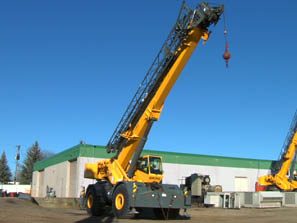Articles
New Crane Signal Person Training Helps Meet OSHA Training Requirements
The relationship between a crane operator and a signal person is critical, and industry-accepted commands should be used to ensure clear communication between the two. In August 2010, OSHA set new training standards to be a Qualified Crane Signal Person. This new standards requires an understanding of the type of signals being used, the ability to use signals correctly, a basic understanding of equipment operation and limitations, knowledge of the requirements specified in OSHA subpart CC (1926.1419 and 1926.1428), and the completion of an oral/written test and a practical test. Furthermore, employers must retain documentation of the signal person’s qualifications.
“Crane Signal Person Basic Training” explains the basic components of mobile and tower cranes, including limitations related to load limits and boom deflection. This interactive online course demonstrates hand signals and verbal signals, so crane signal persons can correctly identify and perform the signals to the crane operator. Additionally, workers learn fundamental safety procedures, including the basic personal protective equipment to wear. This course covers hand signals documented in ASME B30.5-2007—Mobile and Locomotive Cranes and OSHA 29 CFR 1926.1419-1422 and 1926.1428, as well as appendix A to subpart CC of 1926.
- The following hand signals are demonstrated in this course:
- Stop
- Emergency Stop
- Hoist
- Lower
- Move Slowly
- Swing
- Dog Everything
- Use Main Hoist
- Use Whipline
- Boom Up
- Boom Down
- Boom Down and Raise the Load
- Boom Up and Lower the Load
- Travel
Upon successful completion of the course, learners receive a printable certificate, wallet card and earn 0.1 Continuing Education Units (CEUs). This online training is available $19.95 per play.



